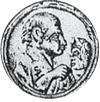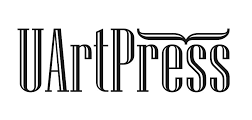A másság megjelenítése az erdélyi magyar és a román sajtóban
Keywords:
creative, consumersAbstract
Otherness Represented in the Hungarian and Romanian Press of Transylvania
Since the beginning of times, humans have formed groups for an obvious reason: it is easier to solve problems, understand questions to be answered, overcome hardships or create safety together. However, if there is a group, there must be outsiders to the group as well.
In my research, I focus on how Hungarians from Transylvania define themselves, how they and the Romanians living among them perceive each other, and how this is represented in their communication.
During the research I inspected which words are used by the two sides to define themselves. While Hungarian articles predominantly use ‘brave’, ‘warrior’ and ‘victim’, Romanian articles rely on ‘developing’ (…), ‘hero’ (erou), and ‘religious’ (religios).
The conclusions drawn from these results may offer a clearer light on the source of possible conflicts rooted in the coexistence of the two ethnic groups and thus – hopefully – the possible solution may be within our grasp.
References
ALLPORT, W. Gordon, 1977. Az előítélet, Budapest: Gondolat Kiadó.
ARONSON, Eliott, 2001. A társas lény, Budapest: KJK-KERSZÖV Kiadó.
ATUEL, Hazel SEYRANIAN, Viviane és CRANO, D. William, 2007. Media representations of majority and minority groups, European Journal of Social Psychology, 37, 561–572.
BAJOMI-LÁZÁR, Péter, 2008. Média és társadalom, Budapest: PrintixBudvár ZRT – Médiakutató Alapítvány.
BAUMAN, Zygmunt, 1996. From pilgrim to tourist; or A short history of identity. In Questions of Cultural Identity, London: Sage Publications.
BLEICH, Erik, BLOEMRAAD, Irene és ELSE De Graauw, 2015. Migrants, Minorities and the Media: Information, Representations and Participation in the Public Sphere, Journal of Ethnic and Migration Studies, 41.(6), 857–873.
CSEPELI, György, 1997. Szociálpszichológia, Budapest: Osiris Kiadó.
ERIKSEN, Thomas Hylland, 2008. Etnicitás és nacionalizmus, Budapest: Gondolat Kiadó.
FEISCHMIDT, Margit (szerk.), 1997. Multikulturalizmus, Budapest: Osiris Kiadó.
GEERTZ, Clifford, 2001. Az értelmezés hatalma, Budapest: Osiris Kiadó.
GRIFFIN, Em, 2003. Bevezetés a kommunikációelméletbe, Budapest: Harmat Kiadó,
HODGETTS, Darrin és CHAMBERLAIN, Kerry, 2007. Mediated Communities: Considerations for Applied Social Psychology, Journal of Community & Applied Social Psychology, 17, 411–414.
KOVÁCS, Éva, ORBÁN Jolán és KASZNÁR Veronika Katalin (szerk.), 2011. Látás – Tekintet – Pillantás. A megfigyelő lehetőségei, Budapest: Gondolat Kiadó.
MCCOMBS, Maxwell, 2004. The Agenda-Setting Role of the Mass Media in the Shaping of Public Opinion, Texas: University of Texas at Austin.
MOSCOVICI, Serge, 2002. Társadalom-lélektan, Budapest: Osiris Kiadó.
PATAKI, Ferenc, 1987. Identitás – személyiség – társadalom, Budapest: Akadémia Kiadó.
TŐKÉS, Gyöngyvér, 2011. ,A kutatás módszertana a kommunikációtudományokban, Kolozsvár: Scientia Kiadó.
Downloads
Published
How to Cite
Issue
Section
License

This work is licensed under a Creative Commons Attribution 4.0 International License.
CC-BY permits any use, reproduction, distribution, self-archiving and citation of the work as long as the authors are credited. The complete bibliographical data of Symbolon Journal must also be indicated, which you can find in the How to cite section on this page. If possible, please also place a link leading to the original publication.
Copyright of the paper belongs to the author(s).




